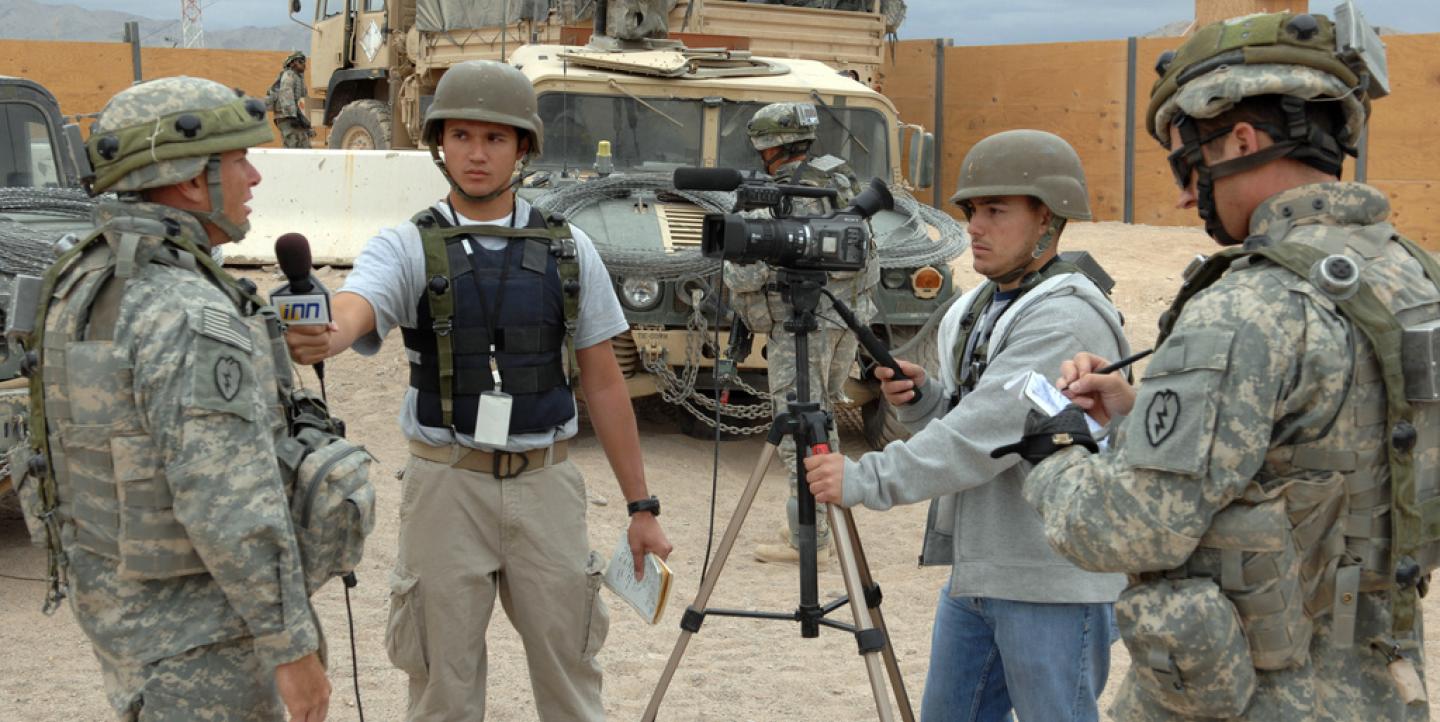In June, UNESCO released “An Attack on One is an Attack on All,” a publication showcasing programs operating worldwide to raise awareness of and help journalists negotiate dangerous situations.
The 22 “good practices” highlighted in the report would have been a perfect tool for a session I conducted with Bangladeshi journalists on covering terrorism.
When I asked how many of them plan safety strategies before heading to a risky assignment, not a single hand went up. “No one talks about this,” a young reporter said with a shrug.
Many of those at the meeting in Dhaka that day covered violent crime and local terrorist activities; some had survived intimidation by various factions, brutal beatings and death threats.
Yet the journalists said the issue of personal safety was not a priority in their newsrooms. Unfortunately, they are not alone; this is a common situation for journalists around the globe.
Before I left in February, I introduced the Bangladeshi reporters to resources, starting with the International News Safety Institute and the Committee to Protect Journalists, both offering excellent safety tips and guidelines.
Today I would acquaint them with UNESCO’s report, with an eye on models for programs that might be replicated in their country.
The document provides insight into “innovative, successful ways media companies, individual journalists and civil society organizations are coming together to improve journalist safety,” according to UNESCO’s website.
Author Larry Kilman hopes the report will inspire others “to support these efforts, perhaps duplicate them, and to raise awareness of the importance of this work.
“It is not full of statistics and data. It is, instead, a collection of stories, told in the words of the motivated people who are dedicated to protecting courageous journalists with proactive measures to make them safer,” Kilman wrote when the publication was released.
The report reminds us why these precautions are necessary: more than 120 journalists and media workers were killed worldwide in 2016 and more than 800 journalists have been killed in the past 10 years. Most of the cases remain unsolved. Even more journalists have suffered intimidation, physical attacks, prison and censorship.
“The culture of impunity is intimidating many [journalists] into exile or silence,” said Guy Berger, director of UNESCO’s Division for Freedom of Expression and Media Development.
The 22 practices of these individuals and civil society organizations throughout the globe are the heartbeat of the publication. What sparked the creation of these safety networks? How do they function and who supports them? There is much to be learned from each one. Courageous voices add wisdom and inspiration to the storylines.
Here are excerpts from three case studies in countries where journalists are imperiled:
• In Pakistan, media leaders created a group called “Editors for Safety,” featuring WhatsApp. This encrypted messaging app is being used “to report, confirm and collect evidence of abuse against journalists. It mobilizes editors’ support and increases the publicity of abuse cases to ensure that crimes against journalists are not ignored and perpetrators are held to account,” according to the report.
When a journalist is targeted, word goes out to the network and “the whole chain starts” explained Zaffar Abbas, editor of the Dawn newspaper, a leading publication in Pakistan. “We will only broadcast or publish the story when an editor from that particular organization confirms [the attack] and gives us the go-ahead. So far, it is working in a remarkable manner,” he said in the report.
• When the Taliban took over Kunduz, Afghanistan, in 2015, they burned down most of the province’s media houses. The Afghan Journalist Safety Committee (AJSC) clicked into emergency mode to help 132 journalists and their families escape the Taliban’s onslaught. The committee’s quick action was credited with saving dozens of lives.
“The big rapid response operation shows that people have learned how to operate, how to make risk management plans, how to use first aid skills, how to use peer-to-peer social support,” said an AJSC staffer who, for security reasons, was not identified in the report. The committee was established in 2009 as a country-wide network employing local journalists and safety trainers in Kabul and in regional offices, media houses and press clubs.
• A program in Colombia operates on the axiom there is safety in numbers. That is the driving force behind a project of the Consejo de Redacción (Editorial Board) of Colombia, a network of journalists that promotes joint investigative projects. Reporters protect themselves by collaborating on stories about political corruption, narcotics trafficking and other forms of organized crime that could spark revenge. The byline on these stories simply reads: “Written for the Consejo de Redacción”
Investigations often are accompanied by dedicated online forums where journalists can discuss their work with each other and tap into advice from colleagues around the world. The group has developed safety standards that cover everything from handling suspicious packages that arrive in the office to digital security.
UNESCO’s publication provides an optimistic slant on new alliances and cooperative efforts acting on behalf of journalists’ safety. Readers learn that civil society organizations are more involved, motivated by “the need to protect journalism as a societal good.” That is a promising note for media professionals operating in perilous places.
Main image CC-licensed by Flickr via The U.S. Army.


